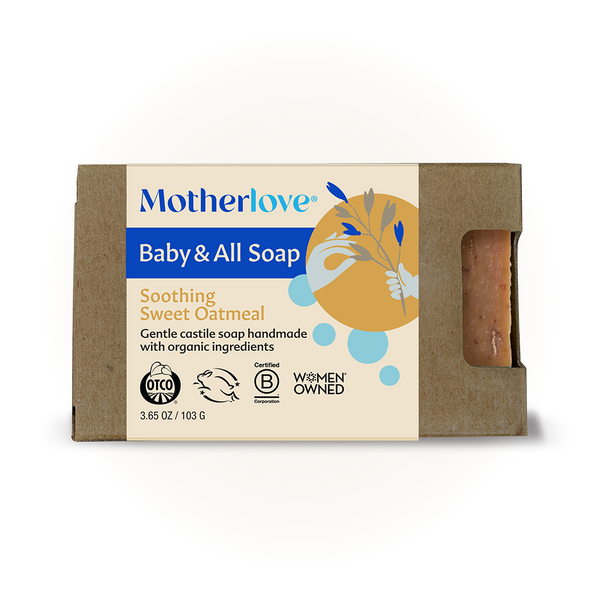Written by Mia.
Bathing your baby is a treasured moment for many parents. While not all newborns appreciate a bath, you may see it as the perfect time to bond with your little one and adore their cuteness. Bath time may sound simple, but it often comes with many concerns, especially from first-time parents. Here’s everything you need to know about bathing your little one!
HOW OFTEN DOES MY NEWBORN NEED A BATH?
Unlike adults, newborns don’t require a bath every day. According to the American Academy of Pediatrics, you should only provide sponge baths until your baby’s umbilical cord stump falls off, which happens around one or two weeks after birth. Afterward, you can bathe your baby up to three times a week.
Newborns don’t require daily baths because they don’t sweat or crawl, making them less susceptible to dirt. Additionally, frequent bathing can cause dryness in their skin. To learn more about caring for your baby's sensitive skin, check out this blog.
WHEN SHOULD I BATHE MY NEWBORN FOR THE FIRST TIME?
The World Health Organization also recommends delaying a baby’s first bath for more than 24 hours after birth. Studies suggest this waiting time is crucial to reduce your little one’s risk of developing hypoglycemia and hypothermia. There are also benefits of letting the vernix, the thick, white, gunky layer coating your newborn baby immediately after birth, continue to protect and moisturize your baby's sensitive skin after birth. Learn more about the benefits of vernix in this blog.
WHEN IS THE BEST TIME TO BATHE MY NEWBORN?
There’s no standard time for a baby bath, so choose a schedule that works well for you. You may pick a morning bath when they’re most alert or a night bath to help them calm down. While incorporating bath time into your baby’s bedtime routine can help ready their body for sleep, you might consider alternatives, such as massage or singing a lullaby.
SAFETY TIPS FOR BABY BATH TIME
Safety is paramount during bath time. Here are some tips to keep them safe.
1. Give a Sponge Bath
A sponge bath is essential for maintaining your baby's skin's health and soft texture. Remember to only give your newborn a sponge bath until the umbilical cord stump falls off. Here’s how to do it:
- Prepare the essentials: You’ll need a soft towel for your baby to lie on, a dampened cloth, a dry towel, a sink or shallow basin, shampoo, wipes, a clean diaper, and a new set of clothes.
- Lay the baby on a flat surface: It could be your bed or the counter next to the sink. Pad the surface with a soft towel. Use a safety strap or hold your baby with one hand.
- Keep baby comfortable: Wrap your baby in a dry towel. Only expose the body part that you’re washing.
- Use lukewarm bath water: Water is a precious resource, with only 0.5% of Earth's water being usable and available for consumption. To help conserve it and avoid skin irritation while caring for your little one, be sure to use the appropriate amount of water at a reasonable temperature.
- Wash accordingly: Gently wash their face with a dampened cloth. Dip the fabric into soapy water before washing other body parts. Pay more attention to specific areas, such as the neck, underarms, behind the ears, and diaper area.
- Wrap it up: Rinse the soap off before drying your baby using a hooded towel. Put on a clean diaper and clothes.
2. Check Water Temperature
Use your elbow to check the temperature since your hand can withstand high temperatures. Ensure the water is just warm enough without being hot. You can also look for a baby tub with a thermometer to read the temperature of the water easily.
3. Avoid Distractions
Don’t let a phone call, doorbell, or another child distract you from providing your baby a bath. If you forgot anything, ask your partner or anyone in the house to get it for you.
AT WHAT POINT CAN MY BABY HAVE A TUB BATH?
You can transition from baby sponge baths to infant tubs as soon as the umbilical area is healed. Babies' first baths should be brief and gentle. Remember to use a hard plastic tub with a sloped, textured surface designed for babies to prevent them from sliding.
TODDLER BATHS AND BEYOND
The older your baby gets, the frequency of baths might increase depending on what they get into throughout the day. You'll find that toddlers and bigger kids often need daily baths to clean up after messy mealtimes, playing outside, and crawling anywhere and everywhere.
Use your best judgment and continue to focus on safety in the bath as your baby gets older. Knowing when and how to bathe your little one properly will give you confidence in your ability to do it well. You’ve got this, mom!







